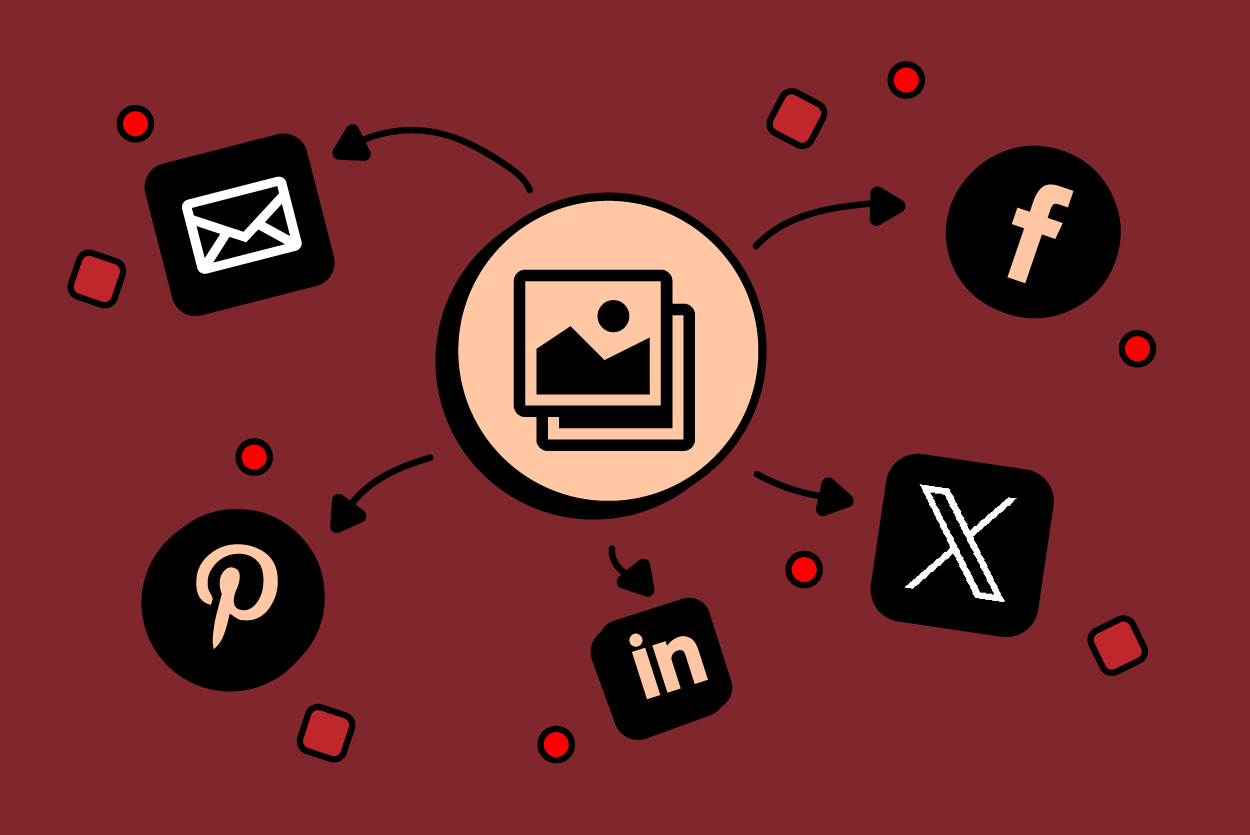Almost every publishing platform and social media network offers the option to cross-post. It sounds convenient: post on Instagram and have it automatically published on your Facebook page. Write a blog post and see it instantly shared on Twitter.
This tactic can work for some content, but often, repetition is merely that — repeating yourself. The best way to connect with your audience is to optimize your content for the platform where they see it.
And that means repurposing rather than repeating.
The key is to have a compelling brand story with key messages you'd like to share. Once you know that, you can repurpose your content — especially your top-performing posts — and make it shine on each unique platform.
The Problem with Platform-Agnostic Content
Your brand has a story, and digital media is a way of expressing that story. Think of a classic tale such as Cinderella, which dates back to ancient times. The core story is the same: a meek, unfortunate girl meets a suitor while under enchantment, then must fit into a slipper to prove she's his bride.
Cinderella can be written as a novel, musical, animated film, poem, song — the list goes on. But it must be adapted to the format. A film needs visuals to show Cinderella losing her slipper at the palace, while a novel must describe it in words. A musical needs a climactic song when Cinderella fits into the slipper.
Merely cross-posting or duplicating content is like trying to print a movie on the pages of a book. It's not the best way to tell your story — let alone maximize your reach.
But that's what happens when you create content with a "platform-agnostic" approach, i.e., writing a post, sending it to multiple channels, and hoping it works well on each.
Repurposing your content lets you focus on the key messages you want to express and how you want your audience to feel. It's the middle ground between plainly duplicative content and creating posts from scratch.
Unifying Your Digital Content with Brand Messaging
The story of Cinderella has "beats" that every form of media must express: an unhappy girl longing for a better life. A benevolent magical being who helps her. The love interest who meets her under enchantment. And the shoe that helps her bridge those two worlds.
What are the main beats of your brand story? For example, an iconic brand like Nike might tell a story about an ambitious young athlete who's determined to overcome prejudice and win the trophy. Or a busy professional eager to escape the daily grind and enjoy a friendly game of basketball.
Those beats become your key messages. In Nike's case, it's their tagline, "Just do it," and all its iterations. Perhaps their latest campaign focuses on innovative shoe design that helps prevent injury. That's what each social media post must express. But their Instagram reel features dramatic footage of a runner, while their Facebook post uses an emotional photo of a marathon winner.
When crafting content, decide which elements of your brand you need to express. What values would you like your audience to perceive? (Keep in mind, brand value content resonates very well and typically has a great ROI.) What ideas do you want them to get? How do you want them to feel?
Break that down into 1-2 story beats. Then, create your main piece of content: the most complete version of the story that you can rearrange or distill for each platform.
Here's how that could work.
How to Tailor Content to Each Platform
The biggest problem with automated cross-posting is that the duplicated post doesn't translate well to the other platform. It may have content that doesn't mesh with the channel's inherent features. For example, a cross-post from Instagram will retain the hashtags, which are virtually useless on Facebook. As the saying goes, it's like forcing a square peg into a round hole.
To effectively repurpose content across channels, you must understand what performs best on each network.
Best Content Practices for Major Social Media Networks
Instagram: Reels reign supreme, with higher reach and engagement than static posts. If you do post photos or graphics, keep them simple and eye-catching. Captions should be witty or emotional; see Starbucks' Insta for good examples.
Facebook: Page "updates" and other original content have been overshadowed by link-sharing and engagement posts. You can link to your content on your blog, website, or YouTube channel. If you do make a regular post, keep it short, no hashtags.
Twitter/X: This platform has been through many changes over the past couple of years, but it remains a heavily text-based platform. Use links or videos sparingly, and focus on asking your audience questions or encouraging them to comment.
TikTok: Known for its ultra-short, addictive videos, TikTok is great for "bite-size" content marketing. You'll want to keep your reels short, snappy, and on point. This could be a single quote or helpful tip from your larger content piece.
YouTube: Obviously, you'll need video content for YouTube. However, the top-performing videos are typically explainer/how-to videos because they're more likely to appear in search results. Once you gain a following, try Q&A videos or even livestreams to connect directly with your audience.
Pinterest: As with YouTube, Pinterest content performs best if it helps users learn something or get inspired. Use one compelling image and a brief caption: you can link to your YouTube video or a how-to article on your website.
Step-by-Step Guide to Repurposing Your Content
So, let's say your nonprofit has a new initiative: helping families learn to grow their own food. You've consulted with a horticulturist and assembled their expert tips, and you're ready to create an article about growing veggies in containers.
The old cross-posting method might look like this:
- Write the article and post it on your website.
- Share the direct link to your Facebook and Twitter.
- Create a graphic with the article's title and header image to post on Instagram.
The repurposing method could look like this:
- Write the article and post it on your website.
- Pull 2-3 key points or tips from the article. Make each one a graphic with a photo or illustration — or better yet, a short video.
- Create an explainer video highlighting those key points or tips. Publish on YouTube.
- Post a photo of a container garden on Pinterest. Add a helpful tip and include a link to the article.
- Create an Instagram reel showing someone planting seeds or watering their container garden. Include a relevant tip in the caption.
- Share the reel to your Instagram or Facebook story and add a link to your article.
- Post on X asking people which fruits and vegetables they'd most like to grow at home. Link to your article or YouTube video.
Those are just a few of your options. Get creative — just keep in mind what your target audience would most like to see on each platform. Remember, attention spans are especially short on X/Twitter, Instagram, and TikTok!
It can take a lot of time and energy to post regularly. Automatically cross-posting isn't always the solution; your well-thought-out content may get lost in translation. Also, you're stuck telling the story the same way every time. If people do encounter you on multiple platforms, they'll notice that.
Repurposing content is a new way of thinking about digital marketing. Rather than duplicating your posts, you're rearranging your key messages so they best suit the platform in question. This shows your thought leadership: you know your stuff, and you know how to adapt to each audience and situation.
Need help developing your content marketing strategy? Book a call with Adriana Lacy Consulting today.


